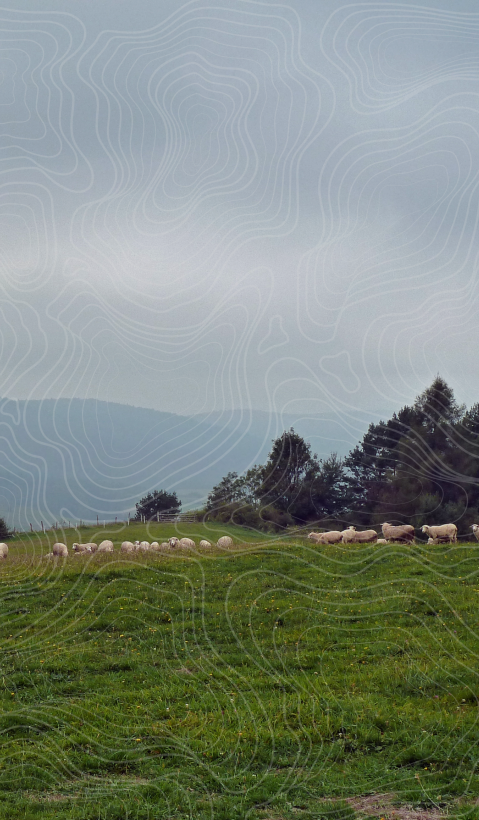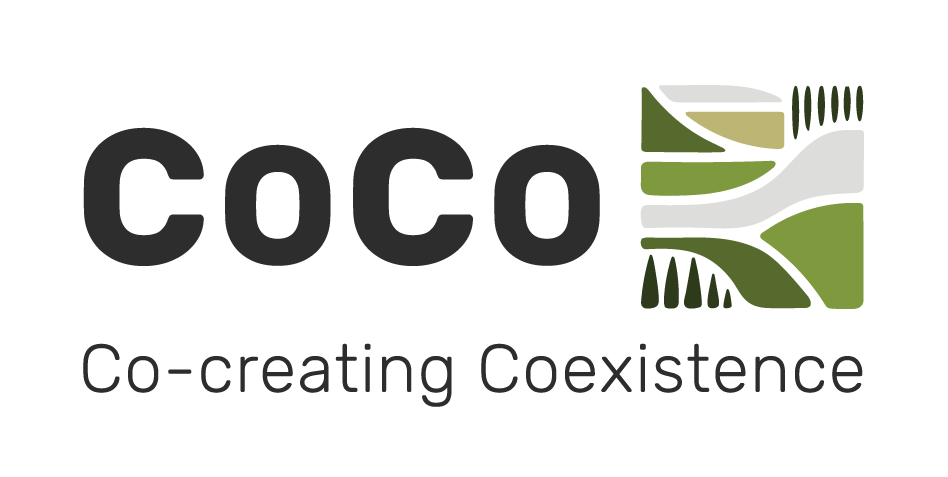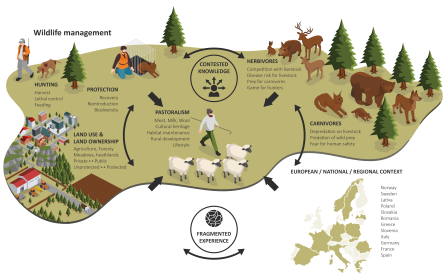
Pastoralism (extensive, outdoors livestock raising) and High Nature Value farming (extensive farming systems which bring significant biodiversity benefits) are important but threatened land use systems in Europe. Compared with other land uses, they bring significant benefits for wildlife and across Europe, preserve important habitats and species. Often relationships between these types of land use and wildlife can be benign or mutually reinforcing. However, this is not to say that there are no challenges.
Historically, both pastoralists and wildlife shared the same spaces, but by the late 19th century, European wildlife was greatly reduced as farming generally intensified. The 20th century saw the recovery of wild herbivores, aided by sustainable hunting and compromises among land users. With the increase in prey, large carnivores such as wolves, have returned naturally expanding back into some of their old range. Certain of these species may compete with pastoralist and HNV farming systems and cause significant damages e.g. damage to crops from wild boar or deer and depredation of livestock by wolves or bears. Their return has sparked polarized social conflicts and high-level political debates over how these species should be managed.
The conflicts around wildlife, especially wolves, have focused attention again on the low intensity farming is impacted by their presence. Pastoralist and high nature value farming systems, face multiple challenges in terms of economic and social viability. Finding effective animal husbandry practices to deal with wildlife return represents an additional difficulty on top of many others. It is essential that dealing with this issue does not fall on one part of society only.

Funded by the European Union. Views and opinions expressed are however those of the author(s) only and do not necessarily reflect those of the European Union or the European Research Executive Agency. Neither the European Union nor the granting authority can be held responsible for them.

